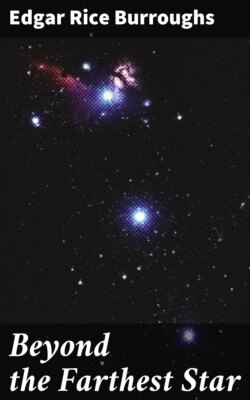Читать книгу Beyond the Farthest Star - Edgar Rice Burroughs - Страница 3
На сайте Литреса книга снята с продажи.
INTRODUCTION
ОглавлениеTable of Contents
When Edgar Rice Burroughs died in 1950 he left a heritage of the most popular and entertaining imaginative literature ever created by one man. His Tarzan stories had won the most widespread fame, partially (perhaps primarily) due to the many motion pictures based on them. But among his personal following, Burroughs is at least as well known as a science-fiction author.
In the years that followed his death, a rumor circulated that a number of unpublished manuscripts had been left among the author’s papers, and hopes were expressed that these manuscripts, if they really did exist, would eventually see publication. Little encouragement was given, however, and as the years passed, the “manuscript legend” seemed less and less likely, in the opinion of many Burroughs devotees.
In 1963, the author’s son, Hulbert Burroughs, conducted an extensive investigation of ERB’s papers, and discovered that, despite all skepticism, the “manuscript legend” was no legend at all—that scores of unpublished manuscripts did exist, ranging from fragments and outlines of stories projected but never written, up to several complete novels.
In the science-fiction field there were three unpublished novelettes. One has already been published by Ace Books as the final portion of the novel Savage Pellucidar. The second, Tangor Returns, became Part II of Beyond the Farthest Star.
When Part I of Beyond the Farthest Star appeared in an adventure magazine in 1941, it was obviously intended as the opening sequence of a science-fantasy adventure novel . . . or more likely, as the beginning of a whole new series of novels in the tradition of Burroughs’ Mars, Venus, and Pellucidar series.
Burroughs had worked out his imaginary planet Poloda in great detail, so that, before transporting the heroic Tangor there, ERB had carefully determined the geography and the astronomical relationships of the planet, had devised a Polodan language and alphabet, and had invented an entire social, political, and economic structure for the Polodans. He mapped the surface of the planet and charted the entire solar system of the star Omos in which Poloda lies, far beyond the Globular Cluster NGC 7006, 450,000 light years from Earth.
In his notes, Burroughs refers to “these three or four novelettes.” But barring the discovery of still further Burroughs manuscripts, we can only assume that a further sequel was never written.
—Richard Lupoff
